Learn how to make umami-rich miso mayo at home in minutes with just a few basic ingredients. This versatile homemade condiment can be used in a number of ways – as a spread, creamy dip, sauce or salad dressing.
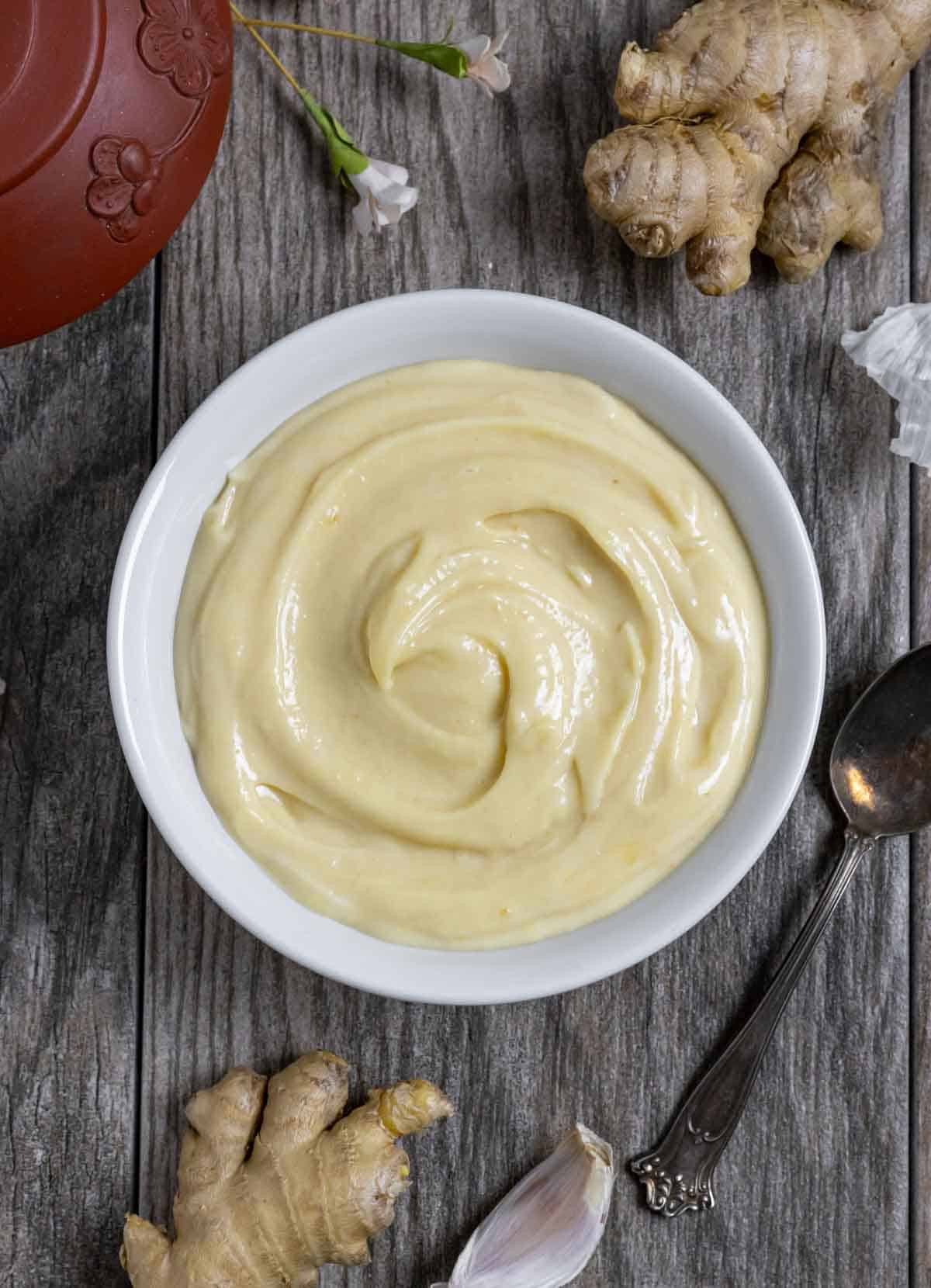
Jump to:
Miso mayonnaise is my secret weapon for umami and is one of my miso master recipes. It adds incredible flavor to simple canned chicken or tuna, like in this amazing Miso Tuna Salad. It is a phenomenal addition to sandwiches made with leftover Smoked Whole Turkey or Convection Roasted Chicken. And, when it’s used in place of regular mayo on burgers… oh my!
It has a little spice from ginger, savoriness from mayonnaise and a light, but classic miso flavor that enhances anything it touches.
Why you’ll love this recipe
- Sensational and unique flavor – create a ‘Wow, what IS that amazing flavor?’ kind of condiment that can be used for pretty much anything
- Smooth, creamy indulgence – mayo and miso paste blend together for a luscious, creamy, savory culinary experience
- Easy and healthy – simply mix the ingredients together to make a nutrient rich condiment. Use healthy avocado mayo and nutritious miso paste to elevate your mayo game.
- Keto and FODMAP-friendly – all ingredients for this recipe are low-carb and can be safely consumed on a low-FODMAP diet in normal serving sizes
What is miso?
It is a traditional Japanese seasoning paste made from fermenting soybeans with salt and koji (a fermenting agent made from cooked grain). It is the famous ingredient used in miso soup. Today, its use has expanded to stews, marinades, dressings and condiments, like this mayonnaise recipe.
There are three main types of miso: white, yellow and red, with white being the mildest and red being the strongest, with the most intense flavor.
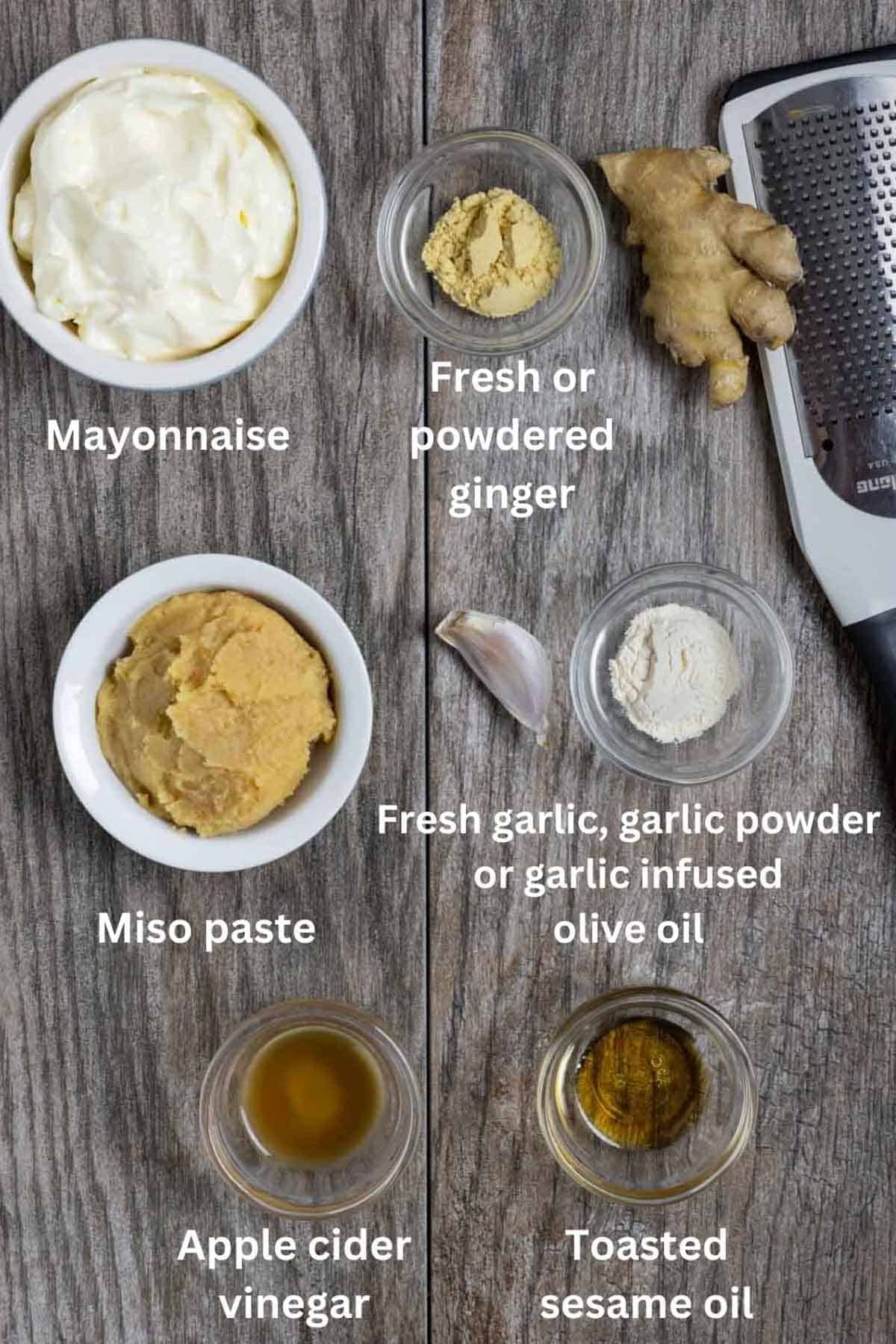
Ingredients
Making this recipe is so incredibly easy, using simple ingredients.
- Mayonnaise – use your favorite mayonnaise. I like to use avocado mayo.
- Miso paste – use any variety you have on hand, but I prefer white miso, as it’s light, mild and very versatile
- Ginger – use fresh or powdered ginger
- Garlic – fresh or powdered. For low-FODMAP use 1-2 tablespoons of garlic infused olive oil.
- Toasted sesame oil – this is optional, but I like the additional flavor. Be sure to use toasted sesame oil, not untoasted sesame oil. The flavors are dramatically different.
- Apple cider vinegar – I love the flavor of this vinegar, but rice vinegar is also a good option
Instructions
Peel and grate the ginger if using fresh ginger root.
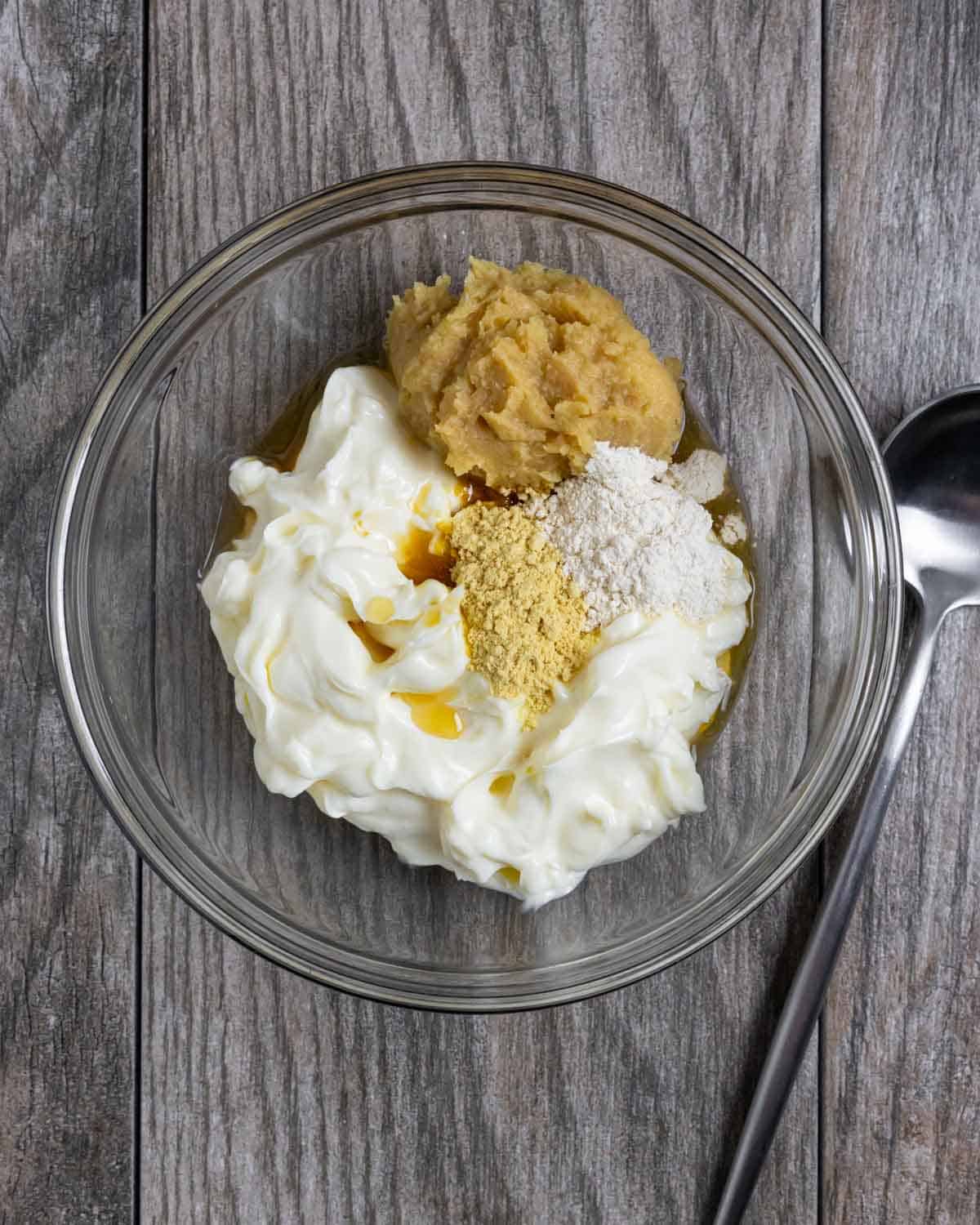
Combine all ingredients in a small bowl.
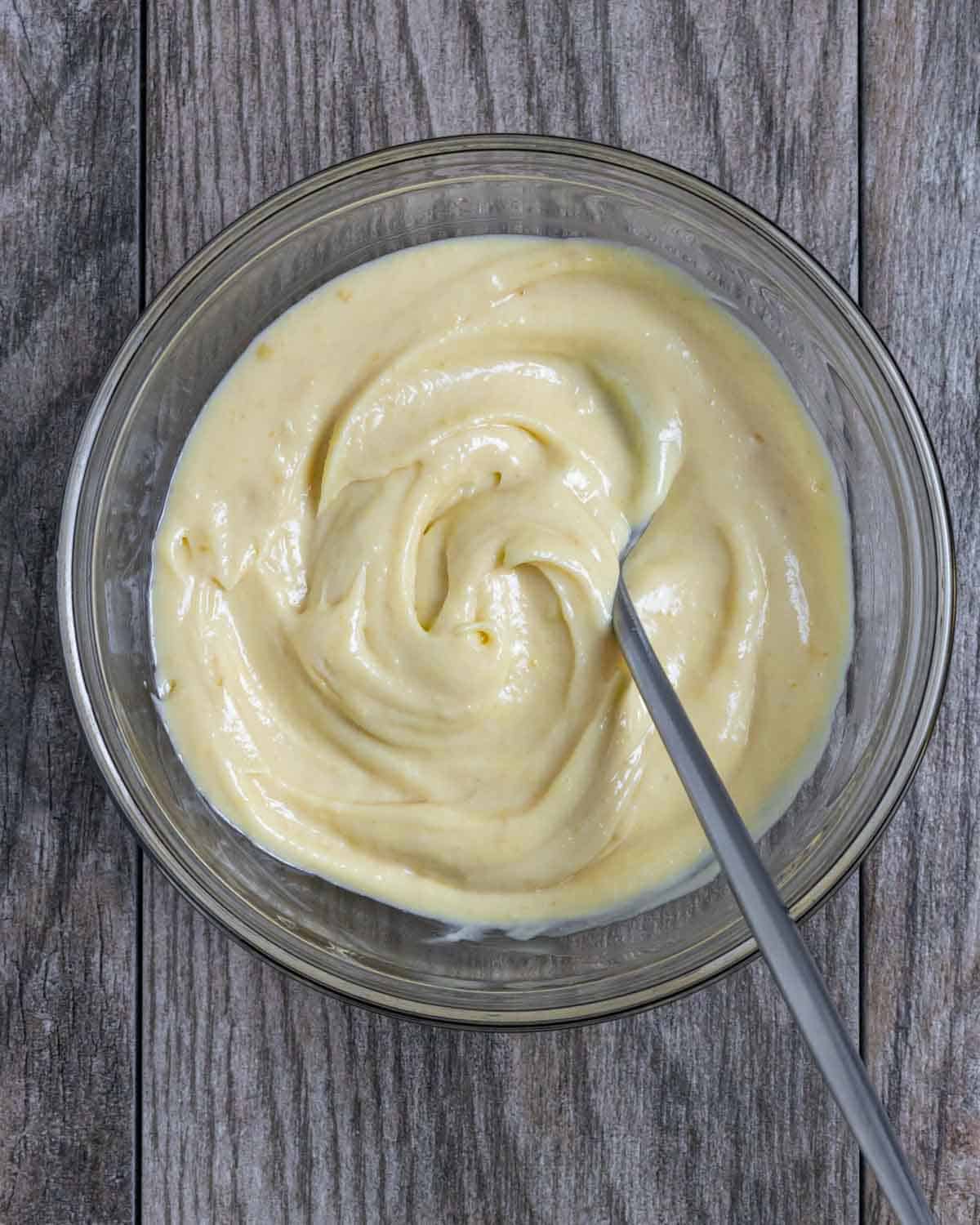
Mix together until thoroughly combined. Use a spoon or a whisk for this step.
Adjust flavor to your taste. You may find you want to add a touch more miso for a more potent flavor.
How to store
Store in an airtight container in the refrigerator for up to 7 days.
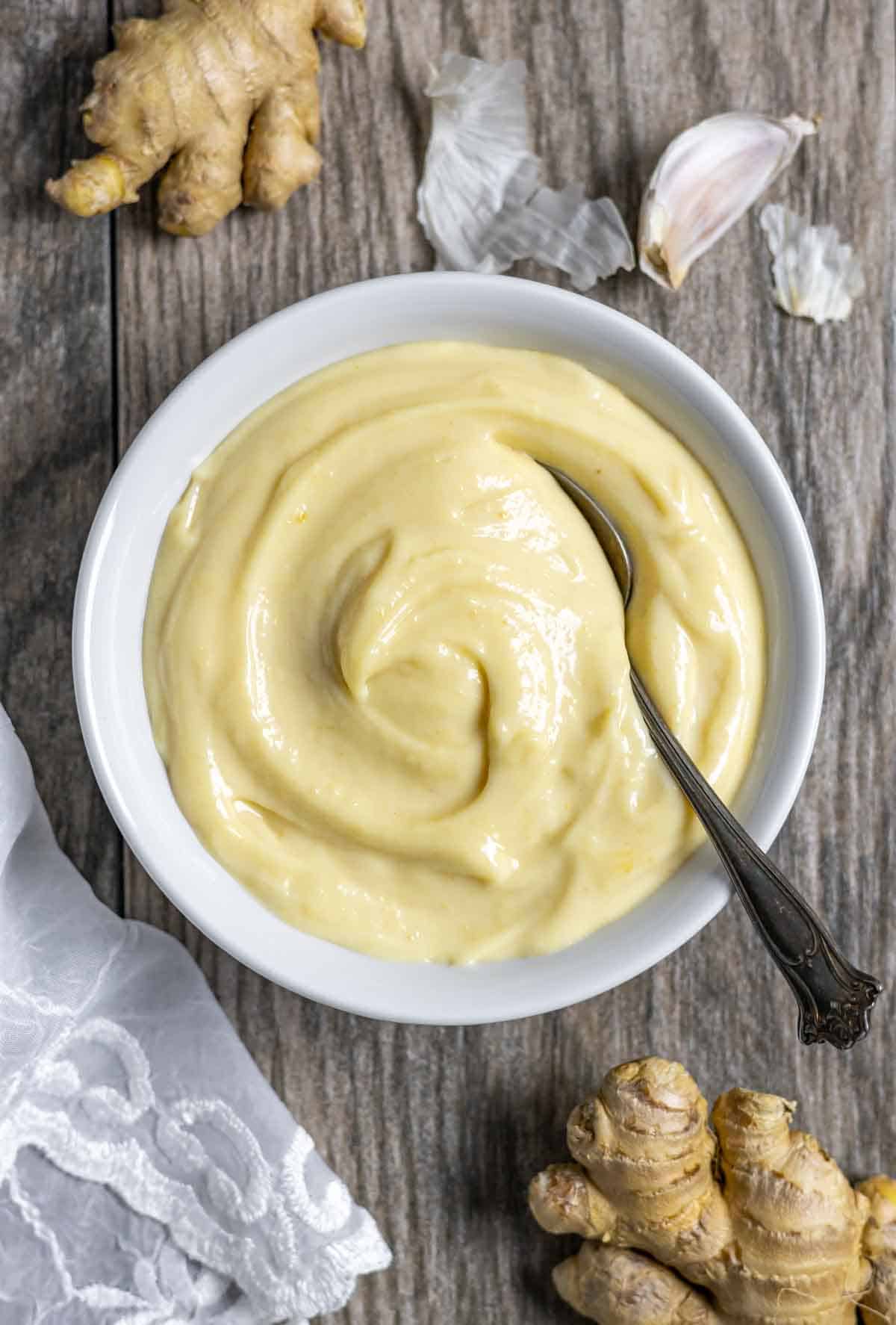
How to use
- Salad – use in place of regular mayonnaise to make chicken or Miso Tuna Salad. For a no-mayo version of tuna salad, check out my Asian Tuna Salad recipe, which is one of my most popular recipes.
- Condiment – use in place of regular mayo on burgers and sandwiches
- Sauce and dip – this makes a great dipping sauce for Asian Cabbage Rolls, but also use it for dipping fries, veggies and more. Thin it out a bit and use it as a miso mayo sauce to top fish, meat and rice bowls (see ideas to thin it out under Variations).
Variations
- Add finely chopped shallot – this is a delightful addition if you don’t follow a low-FODMAP diet
- Miso mayo sauce – add more oil, vinegar, a little water, and lemon or lime juice to thin out your mayonnaise and use as a miso sauce for meats, veggies, fish, rice bowls and more
- Spicy miso mayo – stir in a touch of your favorite hot sauce, wasabi or horseradish
- Make it sweet – add a teaspoon of mirin or sweetener of choice
FAQ
It is typically gluten-free if made with only soybeans and rice koji. However, some varieties such as ‘mugi miso’ are made with barley, which contains gluten. If you have celiac disease or a gluten sensitivity, always check the packaging to be sure it is gluten-free.
Yes, it can be FODMAP-friendly, depending on the serving size. A serving of 1-2 tablespoons is considered low-FODMAP. It becomes moderate in fructans at about 6 tablespoons, which is quite a large serving size. One typical serving of miso paste is 1 tablespoon.
Depending on the serving size, it can be a healthy addition to a keto diet. One tablespoon contains about 4g net carbs. One tablespoon of this miso mayo is only about 1g net carb per delicious serving.
In the fridge, it will last almost indefinitely. However, the flavor may not be as optimal after 12-18 months. The high salt content and fermentation action acts as a preservative, keeping it safe to eat for a great many months, even after it’s been opened. Rice miso and low-sodium varieties tend to last only between 6-12 months, so be sure to check the expiration date on the package.
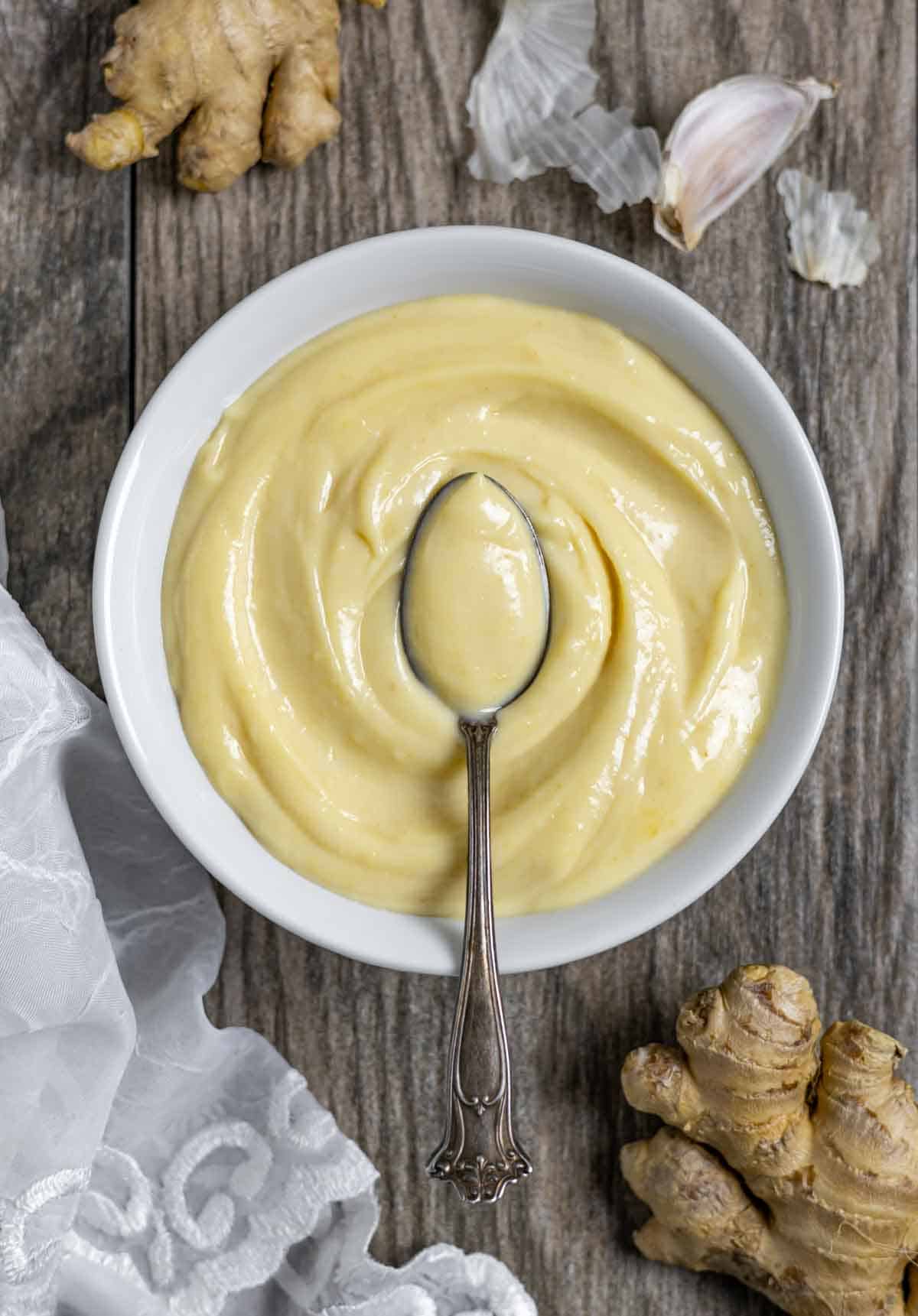
Did you make this recipe? Let me know how you liked it by giving a star rating and leaving a comment!
📖 Recipe
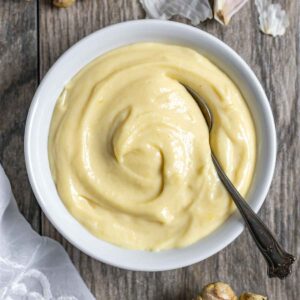
Miso Mayo
Ingredients
- 1 cup mayonnaise
- ¼ cup miso paste (I recommend white miso paste)
- 1 teaspoon powdered ginger (or fresh grated)
- 1 teaspoon garlic powder (or 1 clove fresh grated or 1 tablespoon garlic infused olive oil)
- 1 teaspoon apple cider vinegar (or rice vinegar)
- 1 teaspoon toasted sesame oil (optional)
Instructions
- Peel and grate the ginger if using fresh ginger root.
- Combine all ingredients in a small bowl.
- Mix together until thoroughly combined. I like to use a whisk for this step.
- Adjust flavor to your taste. You may find you want to add a touch more miso for a more potent flavor.
Notes
Variations
- Add finely chopped shallot – this is a delightful addition if you don’t follow a low-FODMAP diet
- Miso mayo sauce – add more oil, vinegar, a little water, and lemon or lime juice to thin out your mayonnaise and use as a miso sauce for meats, veggies, fish, rice bowls and more
- Spicy miso mayo – stir in a touch of your favorite hot sauce, wasabi or horseradish
- Make it sweet – add a teaspoon of mirin or sweetener of choice
How to use
- Salad – use in place of regular mayonnaise to make chicken or Miso Tuna Salad. For a no-mayo version of tuna salad, check out my Asian Tuna Salad recipe, which is one of my most popular recipes.
- Condiment – use in place of regular mayo on burgers and sandwiches
- Sauce and dip – this makes a great dipping sauce for Asian Cabbage Rolls, but also use it for dipping fries, veggies and more. Thin it out a bit and use it as a miso mayo sauce to top fish, meat and rice bowls (see ideas to thin it out under Variations).
How to store
Store in an airtight container in the refrigerator for up to 7 days.Nutrition
*Net carbs = carbohydrates - fiber
Nutritional information is an estimate, calculated using online tools and does not include optional ingredients unless otherwise indicated.

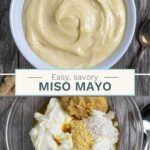
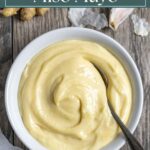

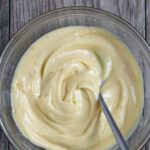
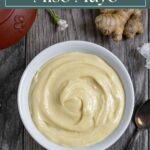
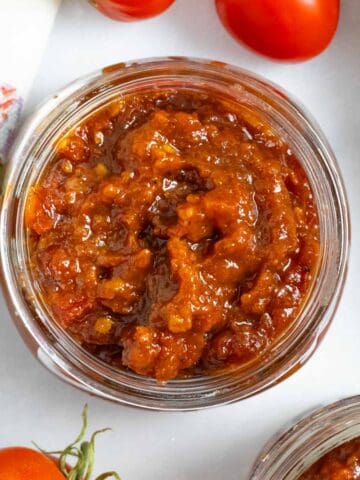
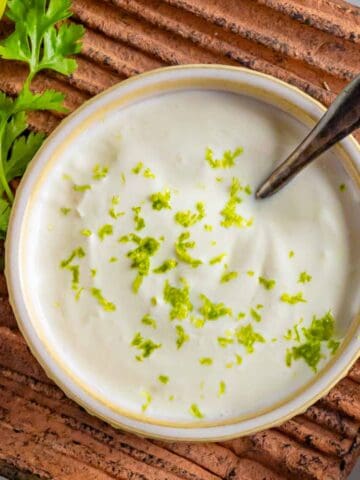
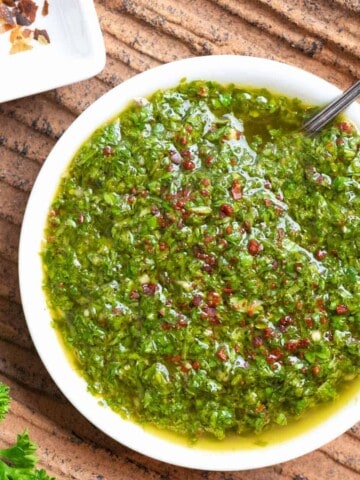
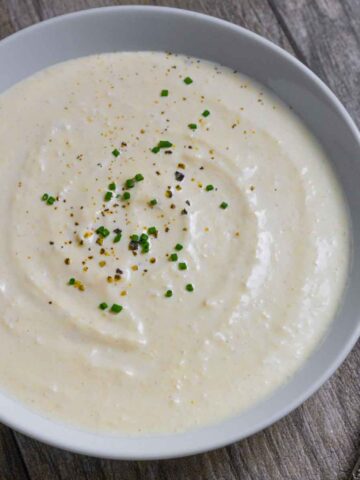
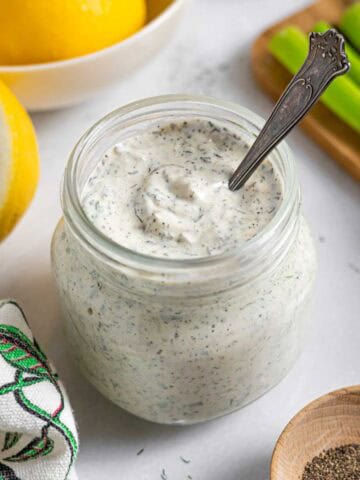
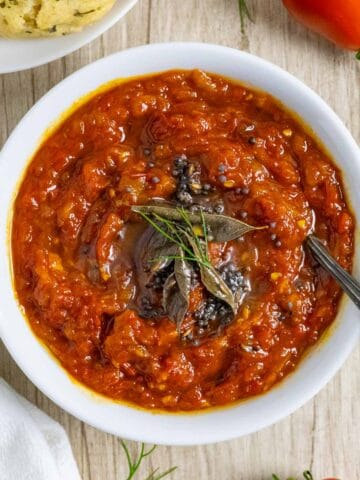
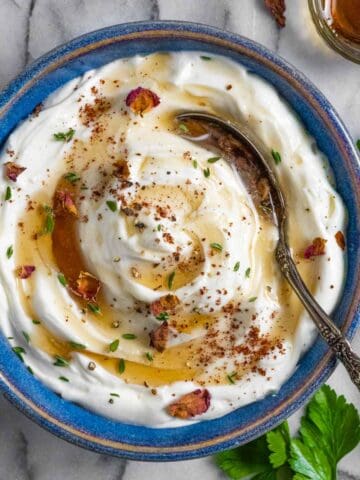
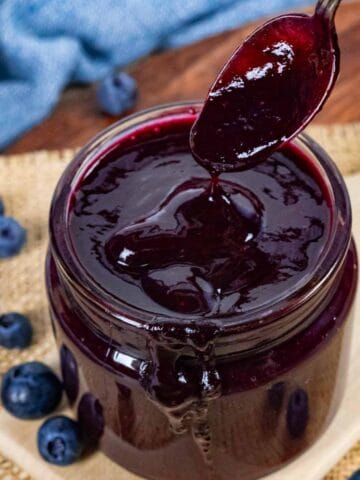
Tracey Hatch-Rizzi says
This mayo is so smooth, creamy and delicious, I look forward to licking the spoon. I now use this almost exclusively for tuna, chicken, turkey or egg salads. I love to serve it with flank or sirloin steak and add just a touch to each bite. If you ever wanted to know what to do with a tub of miso, this recipe is a great option.
Tom S says
Why no quantities of the ingredients? As a baseline or reference point. You just list the ingredients and even optional ones but not how much of each. Really?
Tracey Hatch-Rizzi says
Hi Tom,
Thanks for your comment.
All of the ingredient quantities are listed in the recipe card at the bottom of the post. When reading posts on recipe sites, it is standard for the information in the post to be an overview of the recipe with other information such as tips and addressing questions that are too verbose to be included in the recipe card. The actual recipe, with measurements, is in the recipe card at the bottom of the post. There is also a ‘jump to’ button at the top of the page (the “jump to recipe’ button), where you can bypass all of the text in the post and it will take you to the recipe card (or it might position you just above the card, where you can quickly scroll to it, depending on your browser).
If you’d like the recipe, go back to the post and simply scroll past the text to the bottom of the post or click the ‘Jump to Recipe' button at the top and it will take you past the text to the recipe card, or just above it.
I hope this helps!
Also, I think I will start adding some instruction for folks indicating that they can find the actual measurements in the recipe card at the bottom of the post. I’m sure this felt frustrating and I want to avoid that for my readers!
Take care,
Tracey